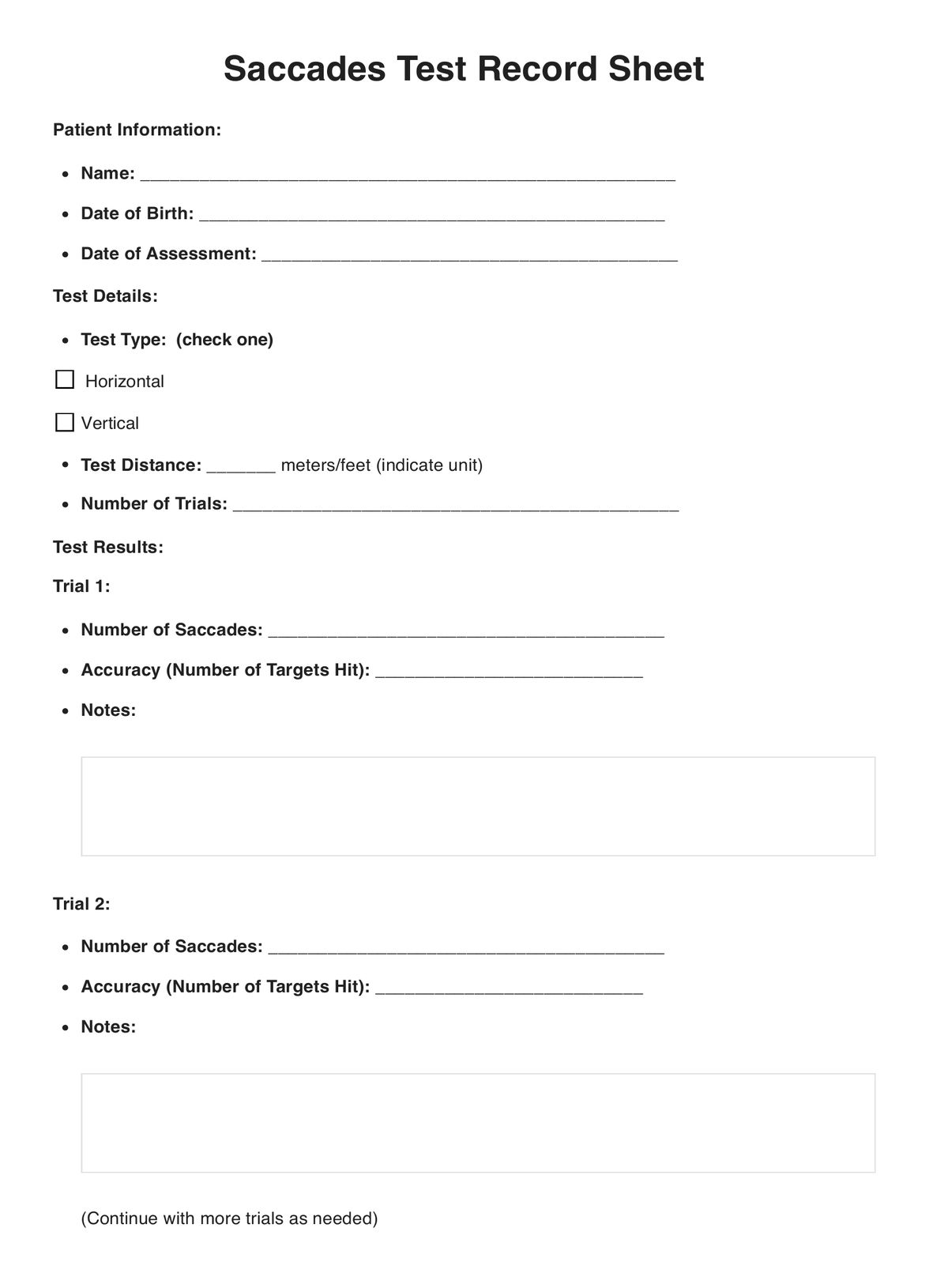Neurologists, optometrists, and occupational therapists are among the healthcare professionals who commonly use Saccades Tests.

Saccades Test
Experience the ease of conducting Saccades Tests. Simplify assessments, track patient progress & share findings securely on our trusted platform.
Use Template
Saccades Test Template
Commonly asked questions
Saccades Tests are used when there are concerns about a patient's visual or neurological health.
Saccades Tests assess a patient's eye movements' speed, accuracy, and smoothness.
EHR and practice management software
Get started for free
*No credit card required
Free
$0/usd
Unlimited clients
Telehealth
1GB of storage
Client portal text
Automated billing and online payments











